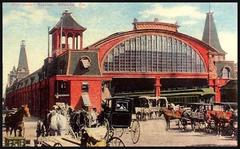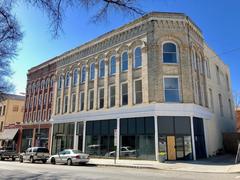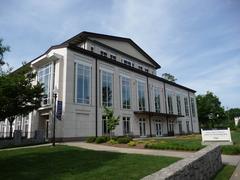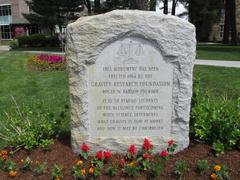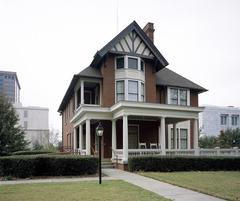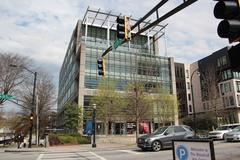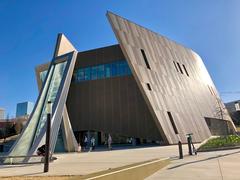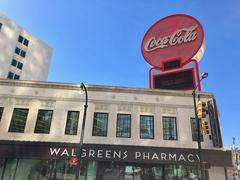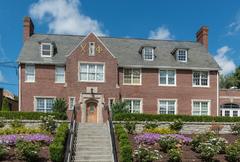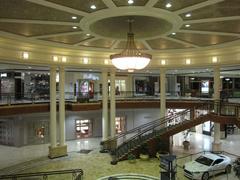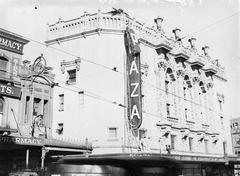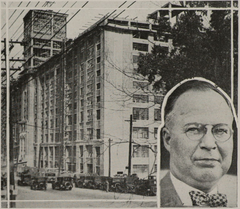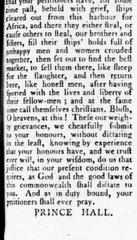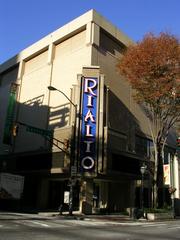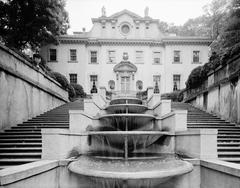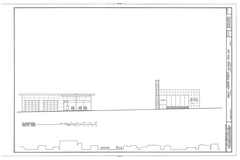Garden Hills Atlanta: Visiting Hours, Tickets, and Historical Sites Guide
Date: 04/07/2025
Introduction to Garden Hills Atlanta
Tucked within the lively Buckhead district, Garden Hills is a showcase of early 20th-century suburban planning, combining historic charm, diverse architecture, and a vibrant community spirit. Conceived in the 1920s by Phillips Campbell McDuffie, this neighborhood was designed as a garden suburb, offering residents both tranquility and urban convenience. Garden Hills’ tree-lined streets feature a rich array of Tudor Revival, Colonial Revival, Spanish Revival, and Craftsman bungalows, reflecting Atlanta’s cultural evolution and the lifestyle of its upper-middle-class citizens during the interwar period (Atlanta Homes Magazine; Garden Hills History).
Protected as a historic district since 1987, Garden Hills has preserved its original character through thoughtful planning, active civic engagement, and community stewardship. The neighborhood is interwoven with schools, parks, and sidewalks, encouraging walkability and fostering a strong sense of belonging. Public parks—including Bagley Park and Sunnybrook Park—and the seasonal Garden Hills Pool provide recreational spaces in a serene setting, while the proximity to major Buckhead attractions such as the Atlanta History Center and Atlanta Botanical Garden makes Garden Hills a compelling destination for visitors of all interests (Garden Hills Pool; Buckhead Heritage Society).
This guide delivers comprehensive information for planning your visit—from hours, tickets, and accessibility to historical context and travel tips—ensuring an enriching experience in one of Atlanta’s architectural gems (Garden Hills Civic Association; Discover Atlanta).
Contents
- Introduction
- Historical Origins and Urban Planning
- Architectural Highlights
- Community Institutions and Social Life
- Visitor Information: Hours, Tickets, and Tips
- Preservation Efforts and Modern Development
- Historical Context: Macedonia Park and Bagley Park
- Frequently Asked Questions (FAQ)
- Conclusion
- Sources
Historical Origins and Urban Planning
Garden Hills emerged amidst Atlanta’s suburban boom in the early 20th century. Inspired by the 1923 Beverly Hills development, Phillips Campbell McDuffie acquired and began developing the area in 1925 as an ideal garden suburb. The community’s growth unfolded in three phases:
- Peachtree Section (1925): Established the core with diverse architectural styles and mature landscaping.
- Country Club Section (1926): Expanded amenities, including the pool and community center.
- Brentwood Section (by 1941): Completed the neighborhood’s original vision, integrating more homes and green spaces.
The neighborhood was intentionally designed for community interaction, with sidewalks, parks, and schools fostering walkability and connectivity (Atlanta Homes Magazine).
Architectural Highlights
Garden Hills’ enduring appeal lies in its eclectic architecture. Homes from the 1920s and 1930s exemplify Tudor Revival, Colonial Revival, Spanish Revival, and Craftsman styles. This diversity reflects both national trends and the preferences of Atlanta’s middle and upper-middle classes of the era. The neighborhood’s historic district status, granted in 1987, ensures that new development aligns with its established character (Atlanta Homes Magazine; Garden Hills About).
Modern projects, such as the Delmont and Sheridan enclaves, introduce contemporary amenities while maintaining architectural harmony (Atlanta Homes Magazine).
Community Institutions and Social Life
Central to Garden Hills is a strong sense of community, anchored by institutions like Garden Hills Elementary and Atlanta International School (formerly North Fulton High School). The neighborhood’s design encourages neighborly interaction, with sidewalks linking homes to parks, schools, and local businesses.
The Garden Hills Pool and Park Association remains a hub for recreation and social events, continuing the area’s tradition of community engagement (Garden Hills Pool). Volunteer-driven events, neighborhood clean-ups, and seasonal festivals further enrich the social fabric (Garden Hills Civic Association).
Visitor Information: Hours, Tickets, and Tips
General Access:
Garden Hills is a residential neighborhood open to visitors year-round. No tickets are required to stroll the streets and admire the architecture.
Parks and Recreation:
- Bagley Park, Sunnybrook Park, and other city parks: Open daily, dawn to dusk. Free admission.
- Garden Hills Pool: Open seasonally (Memorial Day–Labor Day), typically 10 AM–8 PM. Membership or guest passes required; check the Garden Hills Pool calendar for current details.
Guided Tours:
Occasional walking tours are offered by local organizations. Check the Atlanta Preservation Center or community calendars for updates.
Getting There and Around:
- Located between Peachtree and Piedmont Roads in Buckhead.
- MARTA bus stops and stations nearby.
- Parking is available on local streets (observe residential regulations).
- The neighborhood is highly walkable and accessible for most visitors.
Nearby Attractions:
- Atlanta History Center
- Atlanta Botanical Garden
- Shops Buckhead Atlanta
Preservation Efforts and Modern Development
Garden Hills has adapted to growth while preserving its historic identity. About 70% of local housing consists of apartments and high-rises (NeighborhoodScout). Recent projects such as the Delmont luxury homes and the 2827 Peachtree office development demonstrate a balance between modern needs and architectural continuity (Urbanize Atlanta).
The neighborhood’s status on the National Register of Historic Places and its city-designated historic district ensure ongoing preservation and sensitive development (Buckhead Heritage Society).
Historical Context: Macedonia Park and Bagley Park
Garden Hills’ history is intertwined with Macedonia Park, a once-thriving Black community established by formerly enslaved people. Following World War II, Macedonia Park was demolished and replaced by Bagley Park (formerly Frankie Allen Park), now a site of remembrance and recreation. A small cemetery on Pharr Road stands as a tangible connection to this layered past (Atlanta Homes Magazine).
Frequently Asked Questions (FAQ)
Q: Are there entrance fees to visit Garden Hills?
A: No; the neighborhood and public parks are free to visit. The Garden Hills Pool requires membership or guest passes.
Q: Are historic homes open for public tours?
A: Private homes are not open, but local organizations sometimes host public walking tours.
Q: Is Garden Hills family-friendly?
A: Yes; parks, schools, and community events make it ideal for families.
Q: What’s the best time to visit?
A: Spring and fall offer mild weather and vibrant natural scenery.
Q: Is Garden Hills accessible for those with disabilities?
A: Most parks and public spaces are wheelchair accessible. Contact the Garden Hills Association for specific accommodations.
Q: Where can I park?
A: Street parking is available but limited; consider using MARTA or rideshare services.
Conclusion
Garden Hills is a living testament to Atlanta’s garden suburb movement, where architectural beauty, cultural heritage, and vibrant community life converge. Its historic streets and parks invite exploration, while its location in Buckhead places visitors close to many of the city’s premier attractions. Whether you’re interested in history, architecture, or simply enjoying a walk through one of Atlanta’s most charming neighborhoods, Garden Hills promises a memorable experience.
For real-time updates, event notifications, and curated guides to Atlanta’s historic sites, download the Audiala app. Explore more of Atlanta’s unique neighborhoods and stay tuned for upcoming events and exclusive content.
Swan House: Atlanta’s Iconic Historic Mansion
Located within the Atlanta History Center, the Swan House is a prime example of neoclassical architecture and Southern elegance. Built in 1928 for Edward and Emily Inman, this mansion is renowned for its stately design by Philip Trammell Shutze and its beautifully landscaped gardens. The Swan House is also a popular filming location and a must-see for history and architecture enthusiasts.
Visiting Information:
- Hours: Tuesday–Sunday, 10 a.m.–5 p.m. (last tour at 4:30 p.m.); closed Mondays and holidays.
- Tickets: Included with Atlanta History Center admission. Purchase online or at the entrance. Adults ~$22; discounts for seniors/students; children under 6 free.
- Guided Tours: Several daily, plus audio guides and self-guided materials.
- Location: 130 West Paces Ferry Rd NW, Atlanta, GA 30305. Accessible via car (free parking) or MARTA (nearest: Lindbergh Center station).
Highlights:
- Grand entrance hall, formal gardens, elegant ballroom, and library.
- Seasonal events and family-friendly programs.
- Accessibility accommodations available (contact ahead for specifics).
For current hours and tickets, visit the Atlanta History Center website.
Plan Your Visit
Garden Hills and its surroundings are best enjoyed during spring and fall, with community events, blooming gardens, and historic ambiance. For up-to-date information, event calendars, and travel tips:
- Download the Audiala app for real-time updates and self-guided tours.
- Visit the Garden Hills Civic Association for neighborhood news.
- Review the official sources below for detailed visitor information.
Sources
- Atlanta Homes Magazine
- Garden Hills History
- Buckhead Heritage Society
- Garden Hills Pool and Park Association Calendar
- Discover Atlanta
- Garden Hills Civic Association
- NeighborhoodScout Garden Hills Profile
- Urbanize Atlanta on 2827 Peachtree Project
- Snoflo Garden Hills Park


